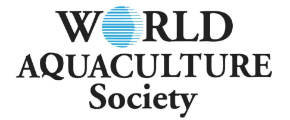Global Education Efforts to Ensure an Aquatic Veterinary Workforce to Assist Aquaculture Biosecurity
With increasing impacts of diseases on aquaculture production in all countries, the need for a well-trained aquatic veterinary workforce has become a global imperative. However, numerous educational efforts are underway ensure that sufficient numbers are available to support aquaculture industries and producers, governmental agencies that support or regulate aquaculture, and a myriad of supporting industries that provide therapeutic products, laboratory diagnostic services, and a number services to prevent, control or eradicate diseases. Without this infrastructure, sustainable and economically viable aquaculture will simply not thrive.
In an effort to provide direction to countries on determining the needs, deficiencies, and a pathway to ensure countries have a well-trained veterinary workforce, the World Organization for Animal Health (OIE) has developed a process evaluate and assist building capacity (including education) to ensure a country's veterinary services comply with OIE standards. Similarly, several international organizations (e.g. the World Veterinary Association, the Federation of Veterinarians of Europe, North American Veterinary Medical Educational Consortium) are making strides to ensure veterinary education across the world is standardized, and meets contemporary societal needs. While some address aquatic veterinary education needs, that of the World Aquatic Veterinary Medical Association (WAVMA) stands out. In order to identify the core knowledge, skills and experience (KSEs) needed for those making up an aquatic veterinary workforce, and recognize those with sufficient KSE obtained through a variety of educational opportunities, WAVMA has developed an Aquatic Veterinary Certification (CertAqV) Program. This program specifically identifies 9 core subject-matter areas, that are directly relevant to providing aquatic veterinary services to aquaculture producers. These cover clinical and non-clinical subjects specifically focused on aquatic health issues, including: anatomy and physiology; environmental factors; aquaculture industry structure and function; pathobiology and epidemiology or important diseases; clinical and laboratory diagnostics; the availability and appropriate use of therapeutic and biologic agents; public health, zoonotic diseases and seafood safety; international and national legislation, regulations and standards: and, principles of welfare and humane treatment of aquatic animals.
Preliminary surveys evaluating available educational available, suggest North America, Australia/New Zealand and Western Europe have sufficient opportunities to provide an adequate aquatic veterinary workforce, whereas other regions need improvement. However, with the assistance of the Council on International Veterinary Education, additional work that will continue through 2018, on evaluation aquatic veterinary education in Africa, Asia, Eastern Europe, South America, and the Middle East will help elucidate in all global regions.
A veterinary workforce includes veterinarians and para-veterinarians (veterinary technicians or nurses, fisheries biologists, and other research scientists who provide important and vital laboratory and other supportive services) who collectively provide the services needed to ensure the health and welfare, and implement optimal measures for the prevention, control and eradication of animal diseases. In most countries, these individuals need to be licensed or registered. DeHaven W.R. & A.D. Scarfe (2012). Professional education and aquatic animal health - A focus on aquatic veterinarians and veterinary para-professionals. Proc. OIE Global Conference on Aquatic Animal Health Programmes. Panama, 28-30 June 2011. World Organisation for Animal Health (OIE), Paris. pp: 139-154.
The OIE's Performance of Veterinary Services (PVS) Program includes processes and tools for evaluating gaps, and pathways, legislation, statutory bodies, twinning and other programs for improving veterinary services










